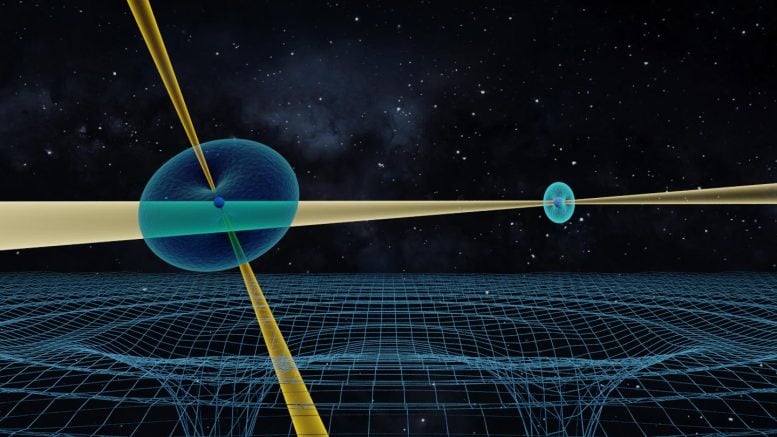
Researchers have conducted a 16-year long experiment to challenge Einstein’s theory of general relativity. The international team looked to the stars — a pair of extreme stars called pulsars to be precise – through seven radio telescopes across the globe. Credit: Max Planck Institute for Radio Astronomy
The theory of general relativity passes a range of precise tests set by pair of extreme stars.
More than 100 years after Albert Einstein presented his theory of gravity, scientists around the world continue their efforts to find flaws in general relativity. The observation of any deviation from General Relativity would constitute a major discovery that would open a window on new physics beyond our current theoretical understanding of the Universe.
The research team’s leader, Michael Kramer from the Max Planck Institute for Radio Astronomy (MPIfR) in Bonn, Germany, says: “We studied a system of compact stars that is an unrivaled laboratory to test gravity theories in the presence of very strong gravitational fields. To our delight we were able to test a cornerstone of Einstein’s theory, the energy carried by gravitational waves, with a precision that is 25 times better than with the Nobel-Prize winning Hulse-Taylor pulsar, and 1000 times better than currently possible with gravitational wave detectors.” He explains that the observations are not only in agreement with the theory, “but we were also able to see effects that could not be studied before”.
Ingrid Stairs from the University of British Columbia at Vancouver gives an example: “We follow the propagation of radio photons emitted from a cosmic lighthouse, a pulsar, and track their motion in the strong gravitational field of a companion pulsar.
We see for the first time how the light is not only delayed due to a strong curvature of spacetime around the companion, but also that the light is deflected by a small angle of 0.04 degrees that we can detect. Never before has such an experiment been conducted at such a high spacetime curvature.”
Dance of pulsars. Animation of the double pulsar system PSR J0737-3039 A/B and its line of sight from Earth. The system — consisting of two active radio pulsars — is “edge-on” as seen from Earth, which means that the inclination of the orbital plane relative to our line of sight is only about 0.6 degrees.
This cosmic laboratory known as the “Double Pulsar” was discovered by members of the team in 2003. It consists of two radio pulsars which orbit each other in just 147 min with velocities of about 1 million km/h. One pulsar is spinning very fast, about 44 times a second. The companion is young and has a rotation period of 2.8 seconds. It is their motion around each other which can be used as a near perfect gravity laboratory. READ MORE...
No comments:
Post a Comment